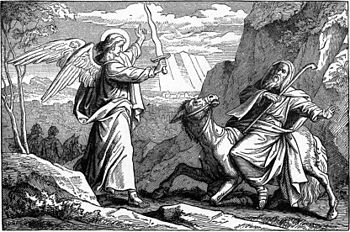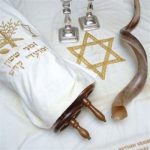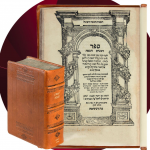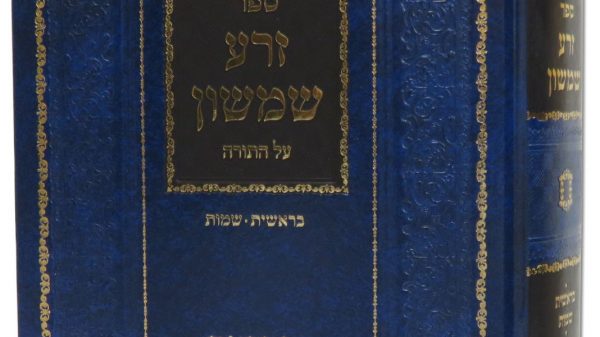Click here to download PDF
Special expanded edition marking the 19th Yahrtzeit of my Rebbe
Maran Hagaon HaRav Yaakov Wienberg ZT”L Rosh Yeshivas Ner Yisroel
לע״נ הגאון מוהר״ר שמואל יעקב ב״ר יצחק מתתיהו זצוקלה״ה
Isn’t the difference obvious?
The Mishna in Avos (5:25) states: “Anyone who has these three things is a disciple of Avraham Avinu and [if he has] three other things he is a disciple of Wicked Bilaam. The Disciples of Avraham Avinu have a “Ayin Tova” – good outlook, “Ruach Nemucha”- humble spirit, and “Nefesh shefelah” – minimal Passions. The disciples of Bilaam have “Ayin Ra’ah” -a bad perspective on those around them, “Ruach Gevoha” – a haughty spirit, and “Nefesh Rechava” – wide Passions. what is the difference between the Disciples of Avraham Avinu and The Disciples of Wicked Bilaam? the disciples Avraham Avinu enjoy this world and inherit the world to come as it says (Mishlei 8:21) “to bequeath to those who love me all that I have, and their treasure houses I will fill”. But the Disciples of wicked Bilaam inherit gehinom and go down to purgatory as it says (Tehillim 55:24) “and you Hashem bring them down to purgatory people of Bloodshed and deceit will not make half way through their lives – but I trust in you”
There are many difficulties in this Mishnah. first and foremost, why is this being set up as the differences between the Disciples of Avraham and The Disciples of Bilaam? why not Stack Up Avraham himself against Bilaam himself? after making it very clear that the Disciples of a Avraham Avinu have all these positive traits and The Disciples of Bilaam have all these negative traits, why does the Mishna ask “what is the difference between the two”? would we have not drawn the conclusion ourselves that good people have it good in this world and the next and bad people have it bad in both world? Lastly, the pasuk brought to prove that the ones who have these positive traits will get both worlds says, “to give to those who love me (Hashem)….” – who spoke about love of Hashem? we are talking about having minimal passions, humility, and a positive outlook on everybody and everything! how does that translate as love of Hashem?
Bad Prophet?
This whole story of Balak Contracting Bilaam to curse of Jewish people happened between them, a considerable distance from where the Jews were encamped. it was a “internal gentile affair” to attempt to hurt the Jewish people, that failed. so much so that the Gemara in Bava Basra (14b) refers to this whole Parsha as “Sefer Bilam” (or according to other girsaos “Parshas Bilaam”) – the ‘book of Bilaam’ that Moshe was commanded by Hashem to write and incorporate in our Torah. The Midrash Rabbah at the beginning of our Parsha explains that the “Parsha of Bilaam” was incorporated in the Torah because if the nations of the world should ever complain to Hashem that they never got a prophet like Moshe to guide them, Hashem would be able to point to the story of Bilaam where Hashem gave them a prophet on the level of Moshe and not only did it not help it only hurt – And that is why Hashem denied them prophets from that time onwards. this is very difficult to understand! we say that Bilaam was a wicked man and even his disciples have these three despicable traits! Hashem gave them Bilaam who was a wicked man (seemingly) and not a prophet like Moshe who was a ‘Tzaddik’!
Bilaam looks Good!
We are fortunate to be raised on the traditions of the oral Torah which Rashi brings to the text of the Chumash. However, if anyone would just read the text of this Parsha, translating the words literally, without being influenced by Rashi, one would think that bill was a great Tzaddik! from the beginning he always stresses he only does what “Hashem his G-d tells him to do, and he never says anything but that! when confronted by the angel he offers to go back and never does anything without the Divine permission. from the text alone we see a law-abiding prophet who even when he failed to make a ‘pretty penny’ and gets somewhat abused by Balak, he (seemingly) proudly says: “I always told you I do what Hashem says”! obviously we submit and fully accept what the oral Torah says about Bilaam, but how could the written Torah be seemingly so misleading and seemingly present this terribly Wicked person as being righteous? how do we reconcile the conflicting messages of the literal text versus what Chazal say and instruct us to read into very faint allusions in the text?
Inner world vs Outer world
There are many angles to the infinite wisdom of Hashem in giving us the Torah in two parts, the written and the oral. But to examine it from Just One of the many angles for the purpose of our discussion (for a supplement of this discussion See “Even Shesiya” on Parshas Lech Lecha): we’ve mentioned many times that the Torah is the blueprint and for the entirety of reality. we have also mentioned that the human being is a microcosm of all of reality as is the Beis HaMikdash. Therefore, the Torah perfectly parallels and perfects the human form. the 248 positive Commandments are parallel to 248 Limbs and the 365 negative Commandments are parallel to the 365 sinews. The Chovos HaLevavos, in his Monumental introduction to his work, talks about how the Torah has in it “obligations of the limbs” and “obligations of the heart”. man has his “external world” which he interacts with with his arms and legs and man has his “internal world” of ideas, ideology, values, and character traits. the Chovos HaLevavos says that he is writing his book for man’s “duties of the heart”. To be of correct ideology and refined of character are real obligations. even if you do all the Mitzvos with your limbs and restrain all your limbs from doing anything wrong, above and beyond that is the obligation to have your “inner World” perfect. the obligation of the limbs in the external world are clearly visible. the obligations of the heart are in man’s “inner world” and can best be called an expression of his soul that resides in his mind and heart. even if a person is able to control the limbs of his body so as not to do anything wrong, his inner World is the soul that resides inside the body and is invisible.
Written Torah vs Oral Torah
Man’s two worlds are parallel to the different chambers of reality. generally speaking, reality is in two parts: the physical and the spiritual. the physical is what we can see and perceive with our senses. the spiritual is known either by prophecy or by dictates of logic, but it is certainly not visible to the physical senses. the Torah, which is the original pattern everything is based on, is in two parts, the written and the oral. the written is visible and comes into existence with a physical action of a hand writing and therefore it remains visible. the oral Torah is invisible and was never meant to be put in writing. The oral Torah resides in the mind and belongs to the inner world of ideas.
With this we could understand an interesting phenomenon. people have an easier time accepting the Divinity of the Bible which is the written law and have greater challenges in accepting the Divinity of the oral Torah. there is no rationale to this delineation because just like we trust those who gave us the Bible that they handed down a book of Divine origin we should trust them equally on the oral Torah. what explains the psychology of why people are quicker to accept the written before the oral is because the written law became physically manifest and seeing is believing! Anything tangible and visible is easy to accept. The oral Torah in essence remains invisible! You have to really have faith for what you can’t see.
They took our Bible!
Another interesting difference is that the Bible was hijacked by the nations of the world. Christians use it their way and moslems use it their way. The oral Torah was never stolen from us! this is because the written law is in universal 3-dimensional space as it is physically manifest. Since the written Torah is in the space we share with the gentiles, they can take it – even though it was never meant for them! The oral Torah never became physically manifest, it’s carried in our minds and hearts and contains abstract spiritual ideas. that’s why the gentiles can never access it and certainly never steal it.
Nature vs Miracles
From the two categories of reality, the physical and spiritual, come the two sets of laws that govern reality: the laws of nature and the miracles. The “Leshem” teaches us that the Torah includes all the programming for how Hashem runs the world. the written Torah is what gave us the physical world and the laws of nature, the oral Torah is what gave us the spiritual Realms and miracles. we share 3D space with the gentiles. we have bodies from the Physical Realm as do they. Therefore, medical knowledge that they may have accumulated from experimentation on their bodies can help us also. As far as the spiritual Dimensions, we have a type of soul that reaches there and they do not! That’s why miracles, both revealed and concealed, only happen to the Jewish people! Miracles are programming from those spiritual Realms created by the oral Torah. they were able to steal our written law that gives nature and the space they occupy, but they can never access our oral Torah! It’s parallel to our souls that are from the dimensions of the supernatural, which they don’t touch. Therefore, we experience the benefits of miracles and they don’t.
Why aren’t Techiyas Hameisim and Olam Habah in the Chumash?
With this we could understand other differences between the written Torah and the oral Torah. Olam Haba is the great goal we are all working towards. It is the real reward of our Mitzvahs. Olam Habah is not mentioned at all in the “Chumash”. the “Chumash” only talks about the “reward” get for it in this world such as peace, tranquility, and prosperity. Olam Habah is only explained in the oral Torah. the Maharal explains (Gevuros Hashem, first introduction) because the written Torah is comprised of prophecies. Prophecies are what the prophets see. Olam Habah is so abstract that it is “out of line of sight” and belongs in the oral Torah. true to form, the written will only discuss what is visible. the visible result of keeping Mitzvahs is the prosperity and Tranquility! the Kuzari actually uses this as a proof to the truth of the Torah. All other religions in their Bibles promise you “Heaven” something that can never be confirmed – as anyone who finds out that he’s been cheated is already dead and cannot warn others! the written Torah took up the challenge of giving proofs that the Torah is true from events in this world that everyone can see! My Rosh Yeshiva, Maran HaGaon HaRav Yaakov Weinberg ZT”L applied these ideas to explain a Rambam in his “Igeres Techiyas Hameisim”. the Rambam says there that Techiyas Hameisim was not spoken about in the “Chumash” because the idea was too difficult for the people to relate to at that time, and it was left in the oral Torah, which is where the esoteric concepts of the Torah are taught. I asked my Rosh Yeshiva the following question: The resurrection is not an esoteric idea in the sense that only the worthy should be aware of it, like Concepts that are taught in Kabbalah. it is one of the 13 principles of faith that even children need to be aware of! He answered that what the Rambam meant to say is that the “Chumash” had to be written in a manner that even a gentile could relate to it! It is for the realm of the visible, and that idea was too abstract at the time.
Bilaam in and out
We can Now understand the different perspectives on Bilaam that we get from reading the written Torah solely and only as opposed to what he looks like from the perspective of the oral Torah. any outside Observer that only sees the movements of Bilaam’s body and hears what comes out from his mouth would say that Bilaam is a saintly a G-d-fearing law-abiding servant of Hashem! that is from the perspective of what the five senses can detect. but what is going on inside Bilaam’s mind, heart, and soul? Bilaam’s “inner world” that runs parallel to the oral Torah is rotten! He was always seeking profit, self-aggrandizement and had a very negative outlook on any would-be competitor. the failure of Bilaam was not in his actions! in action and speech he never did anything other than what he was permitted by Hashem. but his motivations were always how to “work the system” and profit! the oral Torah Sees what was going on in his soul, in The Invisible Realm, and sees how rotten he is.
A tale of two Donkeys
it is only through the oral Torah that Bilaam’s “connection to the donkey” is revealed. if it’s in the oral Torah alone is that it was invisible – meaning it was something very subtle. The Maharal explains (Avos 5:25) that the Hebrew word for Donkey- “Chamor” has the same letters as “Chomer” – material. to contrast with Avraham Avinu who is the “good twin” of Bilaam. when Avraham goes to do the most selfless act in the world, out of pure love of Hashem, to sacrifice his own son he says to those accompanying him “stay here with the Donkey”. What he was actually saying was “stay here with the “Chomer”- the material”. He had totally transcended the material he had no sense of self or any desire for any self-gratification. he leaves the material totally behind and completes the journey “without a donkey”- symbolizing that he was without any sense of material or physical satisfaction. he was totally selfless pure intellect. Bilaam going to curse the Jewish people and trying to “work the system” to get permission to do so was showing that he was actually “going after the donkey (Chomer)” as he was doing it all for material gain: money and honor!
Josephus & Titus
This helps us explain another mystery that is very troublesome. Anyone who reads Josephus can tell that Josephus was a G-d-fearing Orthodox Jew from the stream of the perushim who believed in the oral Torah. He was quite learned, and he loved his fellow Jews. and yet when he describes Titus he describes him as a great Statesman who was of refined character and who desperately wanted to avoid having to destroy the Beis HaMikdash, but alas, his hand was forced because of the resistance of the zealots that were loathed by the Romans and Jews alike. The problem is that the Talmud describes Titus as one of the most evil people that ever lived! He was the farthest thing from refined and had terrible sadistic pleasure from what he was doing, including defiling and burning the Beis HaMikdash. how do we reconcile what Josephus reports with what it says in the Talmud? both the Maharal and Rav Tzadok HaKohen from Lublin say the same idea: Josephus wrote his books as a reporter. he was merely reporting what his eyes saw. Titus had a ‘Class Act’ as politicians tend to do. he always made sure to appear outwardly as refined, moral and benevolent. He wanted to be seen as a great Statesman that would be a great ruler for anybody. that was his ‘act’ and he did it so perfectly that the flesh eyes would never see him break rank from that image. Josephus is just a reporter reporting what he saw and heard from Titus. the oral Torah that runs parallel to the realm of Soul explains was going on in Titus’ soul and exposes everything that Josephus couldn’t see.
Why didn’t Avraham pray to spare Yitzchak?
The true difference between Avraham and Bilaam is in their souls. “on paper” both are law-abiding citizens, but the difference is in their characters, not their actions. Avraham Avinu’s whole interest is selfless. He just wants to do the will of Hashem. When Avraham was commanded to sacrifice his son, he asked no questions and didn’t beg for mercy. Yet earlier on, when informed that Hashem intended to destroy Sedom he begs for mercy for them. For the people of Sedom he prays for mercy and for his own righteous son not?!? My Rosh Yeshiva, Maran HaGaon HaRav Yaakov Weinberg ZT”L answered: He was made aware of the impending doom of Sedom and prayed for mercy, but he is given a direct order to sacrifice his son. When Avraham gets an order from Hashem he doesn’t ask questions or pray for it to be different, he annuls his self-interest and obeys orders! Bilaam’s whole interest is to find a way to advance himself in his career as a ‘holy man’. When he gets an order that he doesn’t like he tries every trick and keeps asking Hashem until he (seemingly) gets Hashem to relent! Bilaam serves Hashem to serve himself! the children of Avraham had the destiny of getting a Torah because of Avram Avinu, our first father, attained the level of selflessness. selflessness is necessary to have true love of Hashem because if you are selfish you love yourself, and that interferes with loving Hashem with all your “Heart Life and resources”. that’s the difference in character between Avraham and his descendants vs the Gentile. Both could be equally law-abiding, but the natural difference between them is on the inside. we have these qualities of self-restraint humility and positive outlook that made us worthy of getting a Torah. Gentiles do not have the same internal makeup!
Jewish Prophets vs Gentile Prophets
This resolves the question we posed earlier. if this whole Parsha is to prove that even if the gentiles would have a prophet like Moshe it wouldn’t help – it would only be worse, how is that proven from Bilaam if he is a wicked man? the answer is: Bilaam was a righteous gentile (until he degenerated later after this story and became a sorcerer)!! the point was to give them a gentile prophet of their own kind on the level of Moshe – not a Jewish Prophet! Hashem was saying: “I will make one of your own a prophet parallel to Moshe and watch what happens”. Even a righteous Gentile lacks the special internal world that we have engrained in us from Avraham Avinu, that invisible internal world of character and soul makes all the difference in the world.
Learning Torah with an Avoda zara approach
There is a deeper Point here. as We Know the Legacy that Avraham was famous for is his rejection of idolatry and serving only the one G-d! my Rebbe Maran HaGaon HaRav Moshe Shapira ZT”L pointed out that the difference between service of Hashem and the service of Idols is not just a difference in who you serve- it is a whole different type of service. if you believe in many gods, how will you choose the god that you serve? you will choose the one that serves you! if you are in agriculture you may want to worship the ‘rain god’ or the ‘sun god’ and if you are in a different line of work you would worship a different ‘god’. idol worship is all about “serving” the god that benefits you – it is really self-service! believing that there is only one G-d and none other is the premise with which a person can reach the level of “Lishma” – serving G-d for its own sake, as its own truth! therefore by no coincidence Avraham who rejected polytheism also attained the level of selfless service built on top of it! The service of one G-d is the basic premise that must come first before a person could progress further and serve the one G-d with Love which means absolute selflessness and no self-interest – “Lishma” – That was the level attained by Avraham who is called (Yeshayahu 41:8) “Avraham who loves me” (Rambam 10th perek of Hilchos Teshuva).in the words of my Rebbe Maran HaGaon HaRav Moshe Shapira ZT”L: “Bilaam learned Torah with an avodah Zarah approach!” he was in it for himself! the same self-interest that pushes the polytheist to choose which gods he will serve was the same self-interest pushing Balaam in his learning of Torah and service of Hashem.
Nefesh Ruach Neshama
With this we come full circle to our Mishna in Avos. we’re talking about Disciples of Avraham and Disciples of Bilaam. Jews can fall into the exact same trap of learning Torah for self-aggrandizement and profit. a person who learns Torah with that agenda is following the approach of Balaam and therefore he is called a “disciple of Balaam”! one who learns Torah selflessly is a “disciple of Avraham” because that’s Avraham’s approach to Torah and Avodas Hashem. the difference is articulated “Ayin Tova” – good outlook, “Ruach Nemucha”- humble spirit, and “Nefesh shefelah” – minimal Passions. The disciples of Bilaam have “Ayin Ra’ah” -a bad perspective on those around them, “Ruach Gevoha” – a haughty spirit, and “Nefesh Rechava” – wide Passions. We’re talking about the levels of soul –Nefesh, Ruach, and Neshama! there is no difference in body! both of them could be equally doing Mitzvahs and equally putting time in the Beis Medrash studying Torah! the difference is in their “inner world”! that’s why the Mishna has to ask: so what is the difference? if they both learn the same Torah and they both equally do mitzvahs with their limbs, what is the difference? the answer is that the difference in the “soul of the matter” is makes all the difference both in this world and the next! and the pasuk used is: “to give to those who love me (Hashem) all I have and to fill their treasure houses” because only if a person is truly selfless can he have real love of Hashem and that was the love of Avraham and all Jews who learn Torah with the selfless approach that we call “Lishma”.
Shiva Asar B’Tamuz
The Great Divide between the visible and invisible was not as great for the Jewish people as it is today. for a very short while the Jews were able to see into the depths that today can only be captured by the oral Torah. this was the level we attained when we were purified at “Maamad Har Sinai” by the giving of the Torah where it says:”…. and all the nation saw the sounds”. Rashi explains that things that are generally audible were visible to them! this means to say is that their Neshamos were so integrated with their bodies that their Neshama augmented their senses so that things that need to be figured out or explained were instantly visible to them. that was the level we would have retained for ourselves if we would have not sinned with the golden calf which resulted in the first Luchos being shattered. by the first Luchos, both the tablets, which represent our bodies, and the writing were equally Divine. there was a total integration as the body was holy like the soul. so also, the Luchos both Stone and the message on the stone were equally Divine. as a result of the sin of the golden calf those Luchos were shattered and were replaced by Luchos where the stone is Earthly like our body is currently Earthly. The words of Torah remain Divine and there’s only certain aspects of it that the Earthly body could see as per the written law as we know it. The rest of the Torah is invisible to us and is retained in the oral Torah. the 17th of Tamuz when the first Luchos were shattered represents the breach in our connection to the Torah – that breach is the beginning of Destruction which reaches its final point on Tisha b’Av.
Rav Yaakov Weinberg ZT”L
The 17th of Tamuz is of my Rebbe Maran HaGaon HaRav Yaakov Weinberg ZT”L Rosh Yeshivas Ner Yisroel in Baltimore. I was privileged to learn with him for 7 years, these were my “7 years of plenty”! Having observed him up close, I can attest to two amazing qualities of which we wrote about in course of this article. He had all the attributes of a “disciple of Avraham”. the man barely ate and when he did he felt no taste in food. He had no ego and was always looking out with a positive perspective of how to help others, how to help talmidim, how to help the Jewish people, and how to help those alienated from Judaism come back. Being a very refined person, having purified his body and his mind, he internalized Torah and acquired it to the point that it was his natural way of thinking! upon seeing a passage in a Rashi or Rambam he immediately just saw all the issues raised by the later Rishonim and Achronim! Ideas that take time to notice, calculate, and figure out, he just saw upon reading – and his mind was already thinking past those ‘Yesodos” to the ‘next generation’ of ideas. it is no coincidence that the day when that level was stripped of the Jewish people with the breaking of the first Luchos he was taken from us. May the words of Torah in this article be a zechus for the Aliyah of his pure Neshama and he will be Melitz Yosher for the whole Jewish people. Zechuso Yagen Aleinu, Amen!











